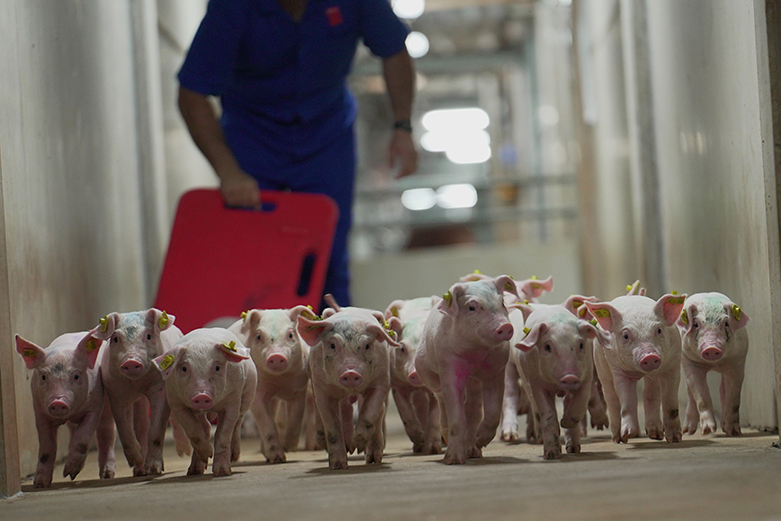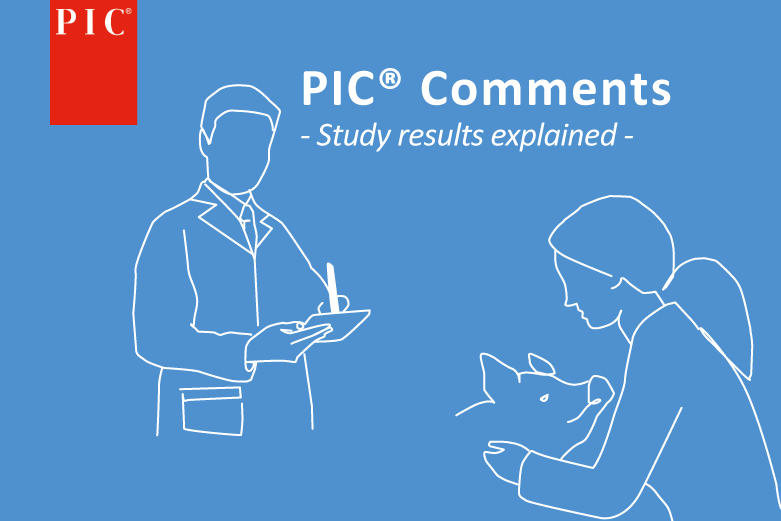Project “Litter of origin”
The successful selection for increased litter size has resulted in an overall decrease in litter average birth weight (LBW). However, irrespective of litter size, a genotype x environment interaction has also been reported to result in a repeatable low LBW phenotype in a subpopulation of mature sows.
In the preliminary phase of a US National Pork Board-funded project to investigate links between LBW phenotype and sow lifetime productivity (SLP), conducted in collaboration with Holden Farms Inc., individual piglet weights were used to determine LBW in parity 2 to 4 of PIC Line 03 sows in a commercial genetic nucleus population. The L03 herd comprised of 1,150 sows. For the stud, sows with a total born (TB) of below 7 or above 20 were excluded.
TB was negatively correlated (P < 0.0001) to LBW [LBW = -0.037 (TB)+ 1.87, R2 = 0.20], representing a 500 g difference between the smallest and largest litters. In contrast, the variation in LBW among litters with the same TB was greater (mean = 950 g, range 600 to 1400 g). Sows with 2 consecutive parity records (n = 183, to date) were classified as having a repeatable low (LLBW, n = 24) or high (HLBW, n = 28) LBW phenotype. If LBW fell 1 standard deviation below or above the population mean, respectively, categorized as a repeatable medium (MLBW, n = 131) phenotype for intermediate weight litters.
Overall, there was a significant correlation between LBW measured at consecutive farrowings (r = 0.4; P < 0.0001). Furthermore, supporting previous results, no sows first giving birth to a LLBW litter produced a HLBW litter at the next farrowing. An extreme LLBW phenoptype is, therefore, repeatable and predictable within sows.
Considering L03 sows bred to produce replacement L03 gilts in the nucleus population, preliminary analyses identify entire sets of littermate gilts that are already subjectively designated “nonselect” at weaning or the preselection stage on the basis of being “small” or “thin”, suggesting that a LLBW phenotype has a major impact on the efficiency of replacement gilt production.
Further evidence to substantiate the hypothesis that “a repeatable low LBW phenotype will negatively impact the production of selectable replacement gilts at nucleus and multiplication level” will continue to be a major component of this ongoing collaborative study.
Source: Efficiency of replacement gilt production is affected by litter birth weight phenotype. G. Foxcroft1, J. Patterson1, N. Holden2, A. Hanson2, T. Werner², M. Allerson2, E. Triemert2, L. Bruner3, J.C. Pinilla4.
1 University of Alberta, Canada, 2 Holden Farms Inc., Northfield, USA, 3 Swine Veterinary Center, St. Peter, USA, 4 PIC
PIC Comments
Sebastian Casiro, Technical Service Manager PIC UK
Low birth weights affect piglet survival, growth and feed efficiency in the grow and finishing phase. The present study provides more information on the repeatability of the low litter weight phenotype and how it affects production of replacement gilts.
This phenotype is repeatable and predictable; therefore, it can be used to perform a strategic herd culling, in which females with low average litter weights are discarded. In this way, we will achieve a higher quantity and quality of replacement gilts available at selection. It is important to note that the quality of the replacement sows will improve, which will have a direct impact on multiplier or commercial farm level as sows with higher birth weights will grow at more adequate rate, reach puberty earlier, can be inseminated at an adequate age and weight, reduce the days of rearing and increase lifetime productivity.
In addition to these advantages, by discarding sows that give litters of low birth weight, we will have more homogeneous batches if the males are discarded at the nucleus or multiplier level, having animals of higher birth weight will reduce the days to slaughter, as the animals will grow faster. Also, we will have a better feed conversion ratio and lower pre and post weaning mortality. This is a bonus as the main function of nucleus and multipliers is genetic dissemination.
Finally, as we know that this phenotype is repeatable, if strategic selection is not possible to be achieved to full extent and some females with the LLWB phenotype are left in the herd, we know that the next time they farrow, more time will need to be spent on that litter with smaller piglets which need extra care. Knowing this, we can note this on the female’s record, so that staff at farrowing department know that this litter will need to be followed up more closely. All these strategies can help us to focus our efforts in the areas that are needed to increase the efficiency of the farm.
Dieser Beitrag wurde ursprünglich veröffentlicht in “Investigación Comentada – SUIS”.




